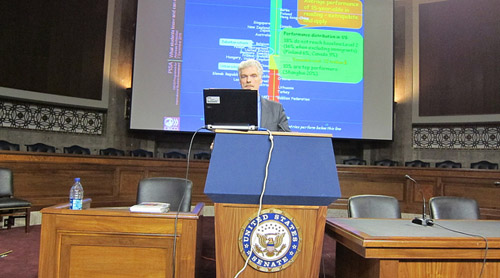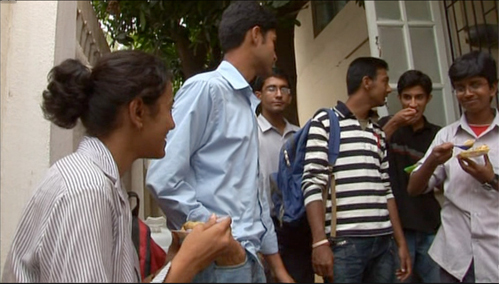Investment in education is investment in people and in a nation’s future. And it is also about money!
“The cost to individuals and society of young people leaving school without a qualification keeps rising,” stated OECD Secretary-General Angel Gurría in connection with the OECD’s annual Education at a Glance report.
According to this report, the global economic crisis has proved much tougher for people without university degrees. Unemployment rates in 2009 among university graduates stood at 4.4% versus 11.5% for those people who did not complete high school. Current graduation trends indicate that 82% of young people today will complete upper secondary education, but those who don’t will face greater challenges entering and staying in the job market. Over 50% of 15- to 19-year-olds who are not in school are unemployed or out of the labor force.
Governments therefore need to invest in education. Better educated people are less likely to need unemployment benefits or welfare assistance, and pay more tax when they enter the job market. A person with a tertiary education will pay back an average $91,000 in income taxes and social contributions over his working life, over and above what the government pays for his degree. Education pays for individuals, too: the gross earnings premium for an individual with a tertiary degree exceeds $300,000 for men and $200,000 for women across the OECD countries, over their working lives.
The Education at a Glance report, which for the first time includes an analysis of education systems in Brazil, China, India, Indonesia, Russia and South Africa, shows the global picture is changing. At present, one in three university-educated retirees resides in the U.S., but only one in five university graduates entering the workforce does. Conversely, while only 5% of adults in China have a tertiary degree, because of its population size, the country now ranks second behind the U.S. and ahead of Japan in the number of people with tertiary attainment among OECD and G20 countries. China (including Hong Kong) also contributes 19.5% of all international students from non-OECD countries.
OECD Division Head Andreas Schleicher points out: “The cross-country correlation is high (+0.51) between the proportion of students performing below proficiency level 3 in PISA and expected years not in education and unemployed or out of the labor force. If we look at the percentage of 15-29 year- olds not in education and unemployed or out of the labour force, the correlation with the PISA reading Score is -0.37, and for the proportion of students performing below proficiency level 3 in PISA, the correlation is +0.35.”
Other findings of the report showed that OECD countries spent 6.1% of their GDP on education in 2008. Between 2000 and 2008, education expenditure increased at a faster rate than GDP in 25 of the 32 countries for which data are available. Between 2000 and 2009, teachers’ salaries increased in real terms in most countries. The largest increases, of well over 50%, were seen in the Czech Republic, Estonia and Turkey. Women make up the majority of students and graduates in almost all OECD countries, and largely dominate in the fields of education, health and welfare, humanities and arts. Young women are more likely than men to finish upper secondary education in every OECD country except for Germany and Switzerland. Men dominate in engineering, manufacturing and construction.
For more information: Education at a Glance 2011: OECD Indicators and
The Global Search for Education
Follow C. M. Rubin on Twitter: www.twitter.com/@cmrubinworld





Recent Comments